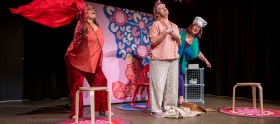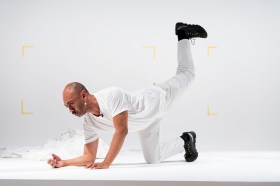Image: Students in class at Box Hill Institute
A new online postgraduate program at Melbourne’s Box Hill Institute will help music industry professionals build existing skills, and offers recent music graduates the chance to acquire elite music industry knowledge and leadership skills, in order to advance their career.
The fully accredited Master of International Music Business develops highly specialised, elite music industry knowledge and places students in the top one per cent of graduates through the very best resources and the chance to learn from people recognised as leaders in the field.
Ben O’Hara, Head of Music Business (Higher Education) at Box Hill Institute, said the flexible postgraduate degree, commencing in early February has no peer equivalent in Australia. ‘I’m excited about the Master of International Music Business because it’s a natural extension and fits well with our reputation for excellence in contemporary and popular music education.’
O’Hara said the program is tailored to the music industry itself, unlike traditional MBAs which are often generalised across a range of business types.
‘People who want to work in the industry and those currently employed need to understand the deeper issues and research behind the music business, which is one of the aspects we teach,’ he explained.
‘It’s not at all about selling CDs anymore; there’s a far greater focus on understanding social media, crowd sourcing and total brand management of artists.
‘Digital continues to transform our world. Graduates from the Masters will be thoroughly equipped to manage complex music business issues during this period of rapid change in economic, musical, cultural, social, legal, and technological,’ O’Hara continued.
‘To work in the music industry nowadays people need to think in more than just digital or physical terms and how that affects profits. You need to think globally and predict change before it occurs.’
O’Hara said that students also need the ability to understand the impact of new technology on the music industry and the business itself. ‘This is the kind of information students need to know about in detail when working in the music industry, either as an entrepreneur or for an established business.’
A big advantage of the Masters course is its flexible delivery, which is for the most part delivered to students online. ‘[This] allows us to engage experts from all over the world, for instance a social media expert from the US or a branding specialist from the UK. The interactive online discussions help students enormously in their knowledge of the global music business,’ said O’Hara.
‘Online learning also means students can complete the course while maintaining their industry based employment,’ he said. ‘The online discussions happen at whatever time is suitable to the student. If they want to do them at two o’clock in the morning they can, before or after working hours, it’s very flexible learning based around the student’s personal timetable.’
O’Hara adds that a commitment to excellence has fuelled the energy and enthusiasm of lecturers and students alike at Box Hill Institute. ‘We take music business education really seriously. We are totally authentic in what we are trying to achieve for our students,’ he said.
‘Employing the best teachers is an important component of that. Our people are true professionals whose knowledge of the industry – and their ability to pass on that knowledge – is first class. We are highly regarded in the music industry to the extent other teachers aspire to join our team at Box Hill.’
It’s no wonder that Box Hill Institute has been the hub of contemporary music education for the last 30 years with a stellar range of graduates making up a large proportion of professionals working within the Australian music scene today. ‘[Box Hill Institute] really has a reputation of being the place to go if you want to study contemporary music, music business and now music business at a Masters level,’ said O’Hara.
Graduates from the music programs at Box Hill Institute are currently working in countless music businesses including the Mushroom Group, Universal Music, Dainty Group and Vicious, and at the major music festivals in Australia, as well as developing their own entrepreneurial music businesses.
O’Hara said employers see Box Hill Institute graduates as professional and work ready, with a broad industry knowledge allowing the flexibility to slot into any role. ‘We’d hope graduates of this masters are people pushing towards leadership roles and senior roles within music industry organisations.’
Entry into the Masters of International Music Business is direct if you already have a relevant Bachelor qualification. Alternatively, if you have industry experience but no formal qualification you can enter by a graduate diploma pathway. The course work is the same regardless of the method of entry and it is a two year course whichever path you take.
Applications for the Masters of International Music Business close on 3 February 2014, with classes commencing on 10 February.
Visit the Box Hill Institute website for more information.






